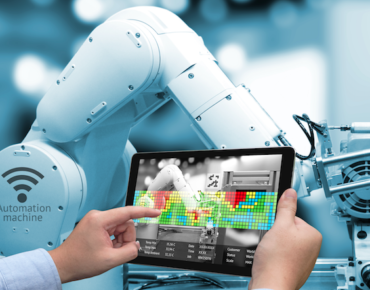IoT Deployments Appear Immune to Pandemic

via Shutterstock
Internet of Things connections driven by early industrial deployments and pandemic-driven telemedicine applications are projected to reach 83 billion by 2024, a 130 percent growth rate, as IoT platform revenues jump an estimated 20 percent this year to $66 billion, according to estimates released this week by Juniper Research.
Despite daunting security and data privacy challenges, the market tracker predicts IoT deployments will be largely unaffected by the economic down draft created by COVID-19. To the contrary, industrial IoT deployments are forecast to jump a whopping 180 percent over the next four years as more automation hits the factory floor and machine-to-machine communication networks expand.
Private cellular networks are seen as a key driver for IoT adoption, with the existing LTE grid slowly giving way to 5G rollouts. The expansion will be aided by new wireless standards that “will serve to accelerate the adoption of private cellular networks over the next five years,” Juniper Research said in an IoT platform survey released on Tuesday (May 5).
Among the reasons for IoT technological immunity to the pandemic’s economic impact is an emerging capability called remote SIM provisioning. The provisioning tool is seen as reducing deployment disruptions as the pandemic drags on, allowing IoT devices to be remotely connected to IoT platforms after deployment.
That approach “minimizes human interactions and reduces the time needed to deploy IoT devices,” the market researcher said.
The pandemic is also seen as helping to kickstart remote health monitoring, a trend that could accelerate the healthcare sector’s embrace of IoT technologies as telemedicine applications replace doctor’s office visits.
“Telemedicine has consistently failed to meet market expectations,” said Sam Barker, co-author of the IoT platform survey. “However, when it is used in tandem with connected healthcare devices, it has the potential to transform a significant proportion of physical healthcare interactions into remote interactions; relieving pressure on badly stretched healthcare systems.”
Still, IoT complexity and lingering questions about viable use cases remain, as do infrastructure challenges ranging from the ability to scale deployments to device interoperability and ever-present data security issues, especially sensitive patient data used in potential healthcare deployments.
Indeed, Jupiter Research reported that nearly all industry experts it interviewed warned that IoT cybersecurity and data privacy challenges are “arguably unsolvable.” IoT security “demands solutions that protect the network layer, the hardware layer and the cloud software,” the study warns.
“This makes it even more complex, as it requires a system of well-connected and seamless functioning security solutions and providers.”
Related
George Leopold has written about science and technology for more than 30 years, focusing on electronics and aerospace technology. He previously served as executive editor of Electronic Engineering Times. Leopold is the author of "Calculated Risk: The Supersonic Life and Times of Gus Grissom" (Purdue University Press, 2016).










